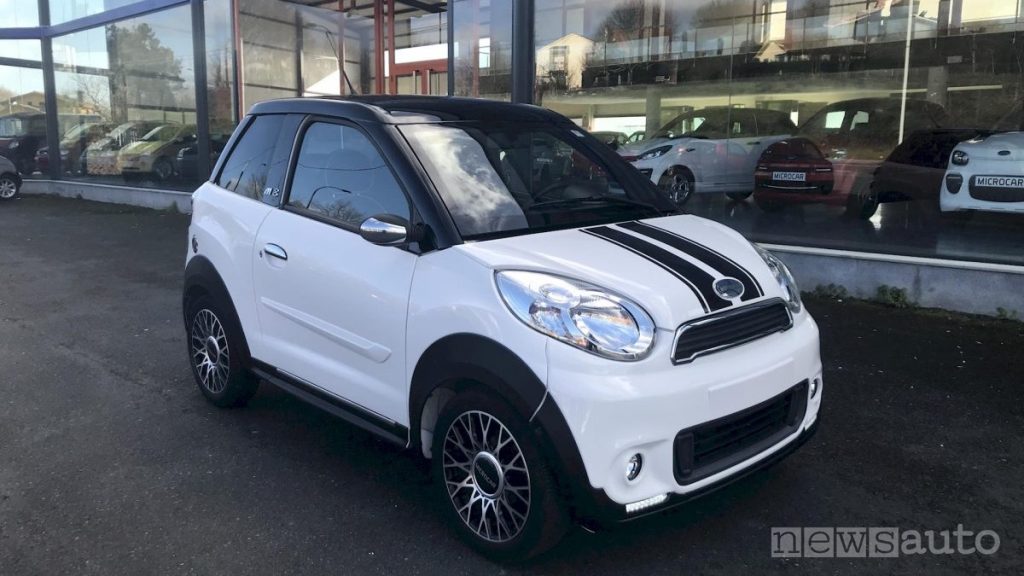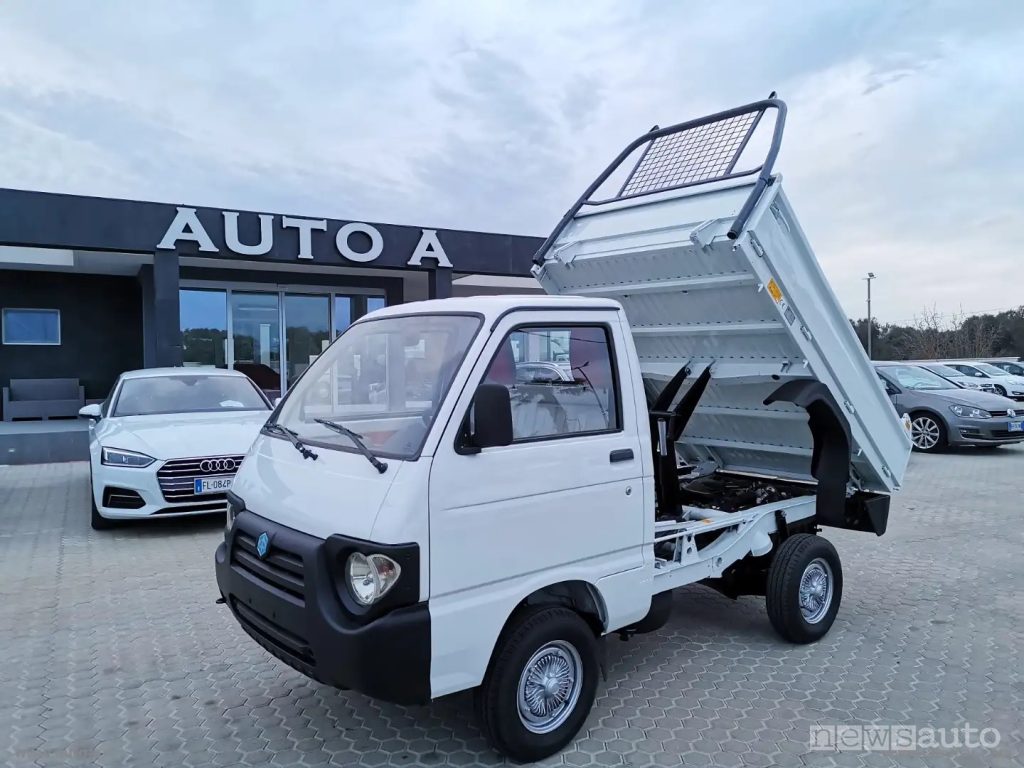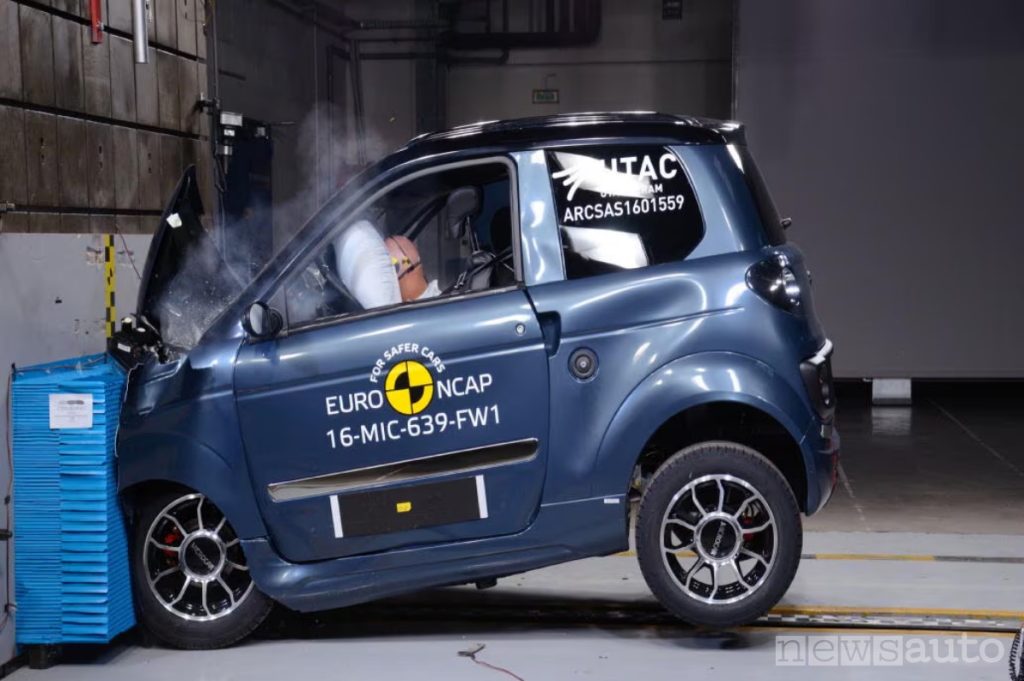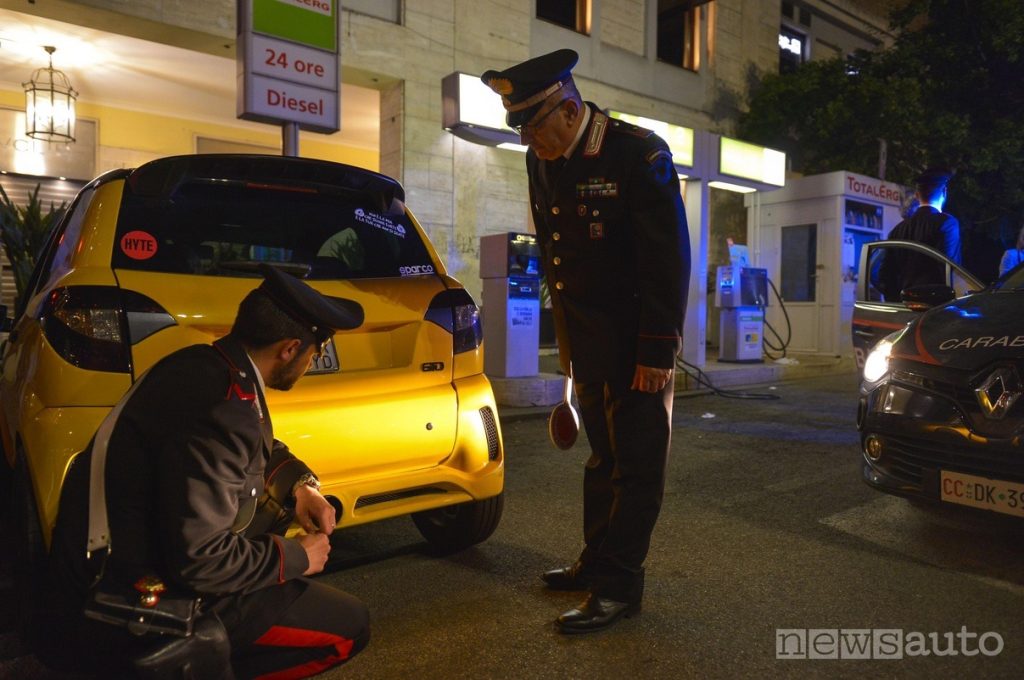For many drivers, the first experience behind the wheel takes place on a light quadricyclebut not only that. Many recognize and exploit the small size of these vehicles to get around city traffic or to save money. This is a category of vehicles born around the 60s/70sin vogue since the late 80s, with the aim of reducing maintenance, production and consumption costs. In more recent times they are known as microcarand belong to the narrow band of vehicles that can be driven before the age of majority. Like any other moving vehicle, they are regulated by the Highway Code and European directives. Let’s see what the definitions and rules of microcars are.
Classification small cars and microcars, light quads
Based on the international categories microcars fall into the category of mopeds and motorcycles. These are classified into seven different categories.
– L1e: vehicles to two wheels with a displacement that does not exceed 50 cc and whose maximum construction speed does not exceed 45 km/hotherwise known as the “fifty”.
– L2e: vehicles to three wheels whose engine displacement does not exceed 50 cc. Whose maximum construction speed does not exceed 45 km/h.
– L3e: vehicles to two wheels whose displacement exceeds 50cc or whose maximum construction speed exceeds 45 km/h.
– L4e: vehicles to three wheels asymmetrical with respect to the longitudinal axis, of displacement over 50cc or whose maximum construction speed exceeds 45 km/h (e.g. a sidecar).
– L5e: vehicles to three wheels symmetrical with respect to the longitudinal axis, displacement over 50cc or whose maximum construction speed exceeds 45 km/h.
– L6e: light quadricycles, whose empty mass is less than or equal to 350 kgexcluding the mass of batteries for electric vehicles. Maximum speed is lowerAnd at 45 km/h and whose displacement is less than or equal to 50 cm3 for spark ignition engines. Or whose power is less than or equal to 4 kW for other engines.
– L7e: i quadricyclesother than those in category L6e. The unladen mass is less than 400 kg550 kg for vehicles intended for the transport of goods (excluding the mass of the batteries for electric vehicles). The maximum net engine power is less than or equal to 15 kW (heavy quadricycles).
The categories of interest for the current topic are the L2e and L6e as regards the light quadricycles. The definitions L5e and L7e instead they will be useful to better understand the heavy quadricycles.
Light Quadricycle
An important point is the difference between “light quadricycle” and “heavy quadricycle”, as they also differentiate the laws that concern them. Light quadricycles they differ first of all in the mass precisely. Mandatory less than or equal to 350 kg, excluding the mass of batteries for electric vehicles. Also important are the limitations of power and displacement, with the Maximum power up to 6 kW. The maximum displacement is 50 cc for petrol engines, or 500 cc for diesel engines. Finally the speed limit to 45 km/h.

The intent is to provide mopeds that are slightly safer than the classic two-wheeled “cinquantini”, while still maintaining speed and weight to the minimum required by law. These two factors are the most significant in the event of a possible impact. In addition to passenger protection, there is a fiberglass body and tubular frame. This and the price make them attractive to many young people, and their parents, looking for economical and safe means to start driving.
Heavy Quadricycle
THE heavy quadricycles Instead, depending on their use, they have different limits. For the transport of people, the mass is regulated at a Maximum limit of 400kgwith load capacity maximum not exceeding 200 kg. For the transport of goodsthe empty mass has as Maximum limit 550kgwith a load capacity maximum not exceeding 1000 kg. The weight of the batteries is not included in the mass calculation for vehicles equipped with an electric motor. In this case the speed limit is 80 km/h.

These vehicles are of great use for services in areas where heavier vehicles would be difficult or expensive to operate. Due to their size, fuel consumption and operating costs, heavy quadricycles are better options than other vehicles in some circumstances. They are more powerful than light microcars, thus defining the intermediate step.
Microcar Rules, Who Can Drive Them
Since the light quadricycles are compared to 50cc mopeds by‘Art. 53 of the CdSto be able to drive them you just need the AM license (or higher). That is, the driving licence obtainable in Italy, from 14 years old taking the “license” exam at the motor vehicle department.
As regards the heavy quadricyclesit is necessary to driving licence B1To obtain it, it is necessary to have completed the 16 years of age. Like all other licenses, it requires certain psychophysical and moral requirements, in addition to having to pass both a theoretical and practical suitability exam.
Safety
One of the microcar rules it is the seat belt. As in any other vehicle that is equipped with it, it is It is mandatory to wear it from before the engine is started. Keep it fastened until the engine is turned off.

Unlike the mopeds to which it is often compared, the microcar does not require the use of a helmetsince it is a closed cockpit.
However, the following are important: safety regulations for passengerssince the law provides that they cannot be transported until the age of 16. It should also be considered that the number of passengers that can be transported, is closely related to the number of approved seats. Therefore, it is strictly forbidden to travel in excess of the number allowed in the handbook.
There vehicle maintenance It is just as important as it is for a regular car. Make sure that the safety factors of the vehicle, such as the chassis, braking system and safety systems, are in good condition.
Insurance and MOT
Even one microcardespite the low engine power, must be regularly insured and this involves the payment of periodic insurance premiums.
Minicar auto insurance is a special motorcycle RC with some differences. The standard 50cc scooter insurance is not enough to be in order. In fact, you need a policy for microcar 50 that also covers any damage to the passenger. To take out minicar insurance, exactly as happens for other types of vehicles, you need to communicate the Vehicle datasuch as registration date, type and model with equipment, engine capacity, power and weight. You will also need the information relating to the person taking out the insurance: age, residence and merit class. The average priceor is hovering around the €200.
Inspection and stamp duty on microcars
Even microcars need regular maintenance, with the first service to be done after the first 500 kmWhile the following ones after every 5,000 km. The MOT is mandatory 4 years after purchase, then every 2 years. The advantages concern the‘exemption from paying for limited traffic zonesthus reducing the costs for microcar owners. The issue of the stampsince the microcar I am exempt but they pay a road tax based on the Region of belonging.
| REGION | MICROCAR TAX AMOUNT (up to 50 cc) |
| Aosta Valley | €50 |
| Piedmont | €50 |
| Lombardy | Exempt |
| Autonomous Province of Bolzano | Exempt |
| Autonomous Province of Trento | Exempt |
| Veneto | €50 |
| Friuli-Venezia Giulia | €50 |
| Emilia-Romagna | €50 |
| Liguria | €55 |
| Tuscany | €57.75 |
| Umbria | €50 |
| Marche | €50 |
| Lazio | €55 |
| Abruzzo | €60.50 |
| Molise | €50 |
| Campania | €60.50 |
| Basilicata | €50 |
| Apulia | €50 |
| Calabria | €50 |
| Sicily | €50 |
| Sardinia | €50 |
The development of microcars
Manufacturers and common sense suggest not to make modifications to microcars. Since they are designed not to exceed certain speed limits, if the engine and chassis were modified, there would be a risk of ruining the balance and stability of the vehicle. We often hear of removed diaphragms, extended accelerator travel and different gear ratios; 90 km/h microcars with fragile tubular frames that break even if they hit a pothole badly. Anyone who alters or modifies the engine so that it can exceed the limits of displacement or maximum speed is subject to a administrative penalty and administrative seizure of the vehicle for 60 days. If the dealer or manufacturer modifies them, the seizure and confiscation of the altered vehicles is instead foreseen.

It must also be considered that the souped-up microcar becomes, by law, a motorcycle and, therefore, the driver must have a driving licence (at least A1 or A). Therefore, the minor who drives it, with only a license, can also be charged for the crime of driving without a license. In that case, sanctions administrative penalties for the careless entrusting of the vehicle to a minor without a driving license are foreseen even for those who own it.
There is nothing wrong with customizing your vehicle, especially if it is aesthetically pleasing or legal. But risking the safety of your microcar puts you, your passengers, and other road users at risk.
Read ALL THE ARTICLES where we talked about slot machines and microcars
#Cars #microcars #rules #light #quadricycles